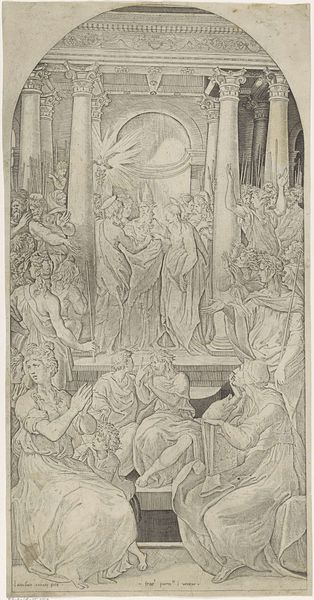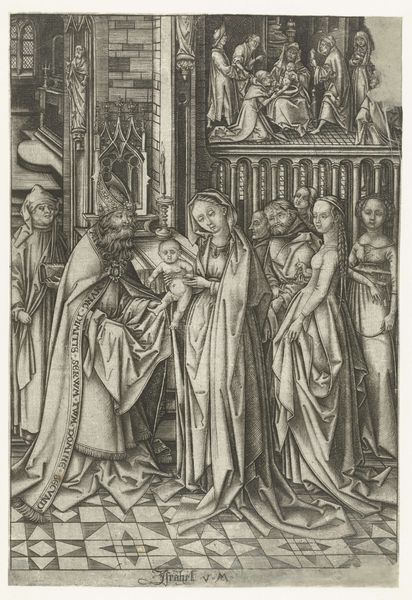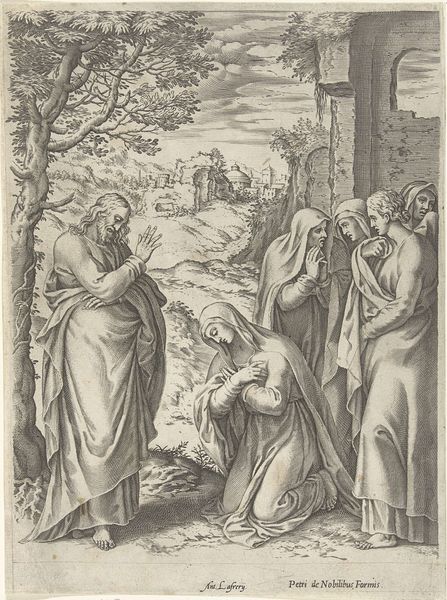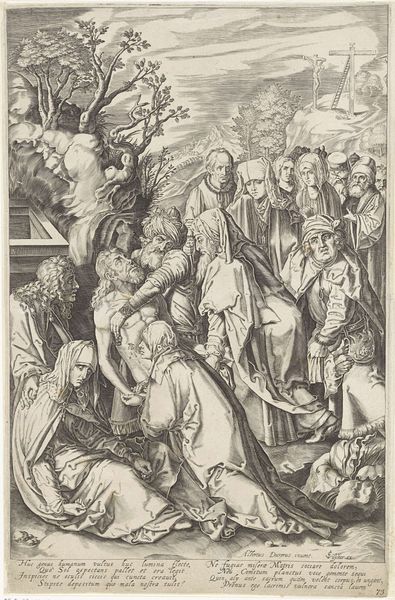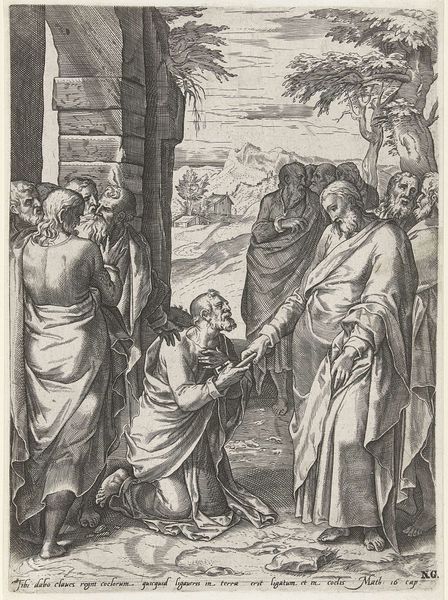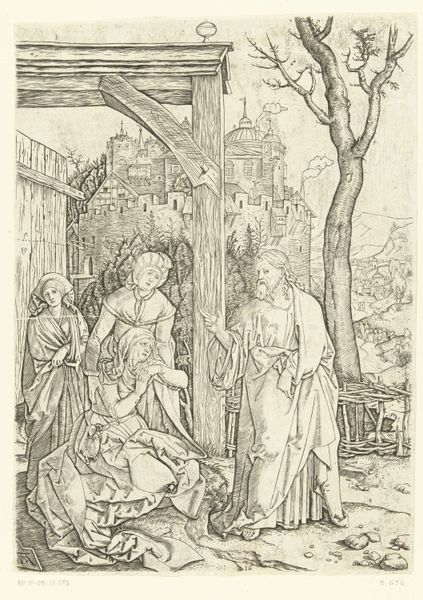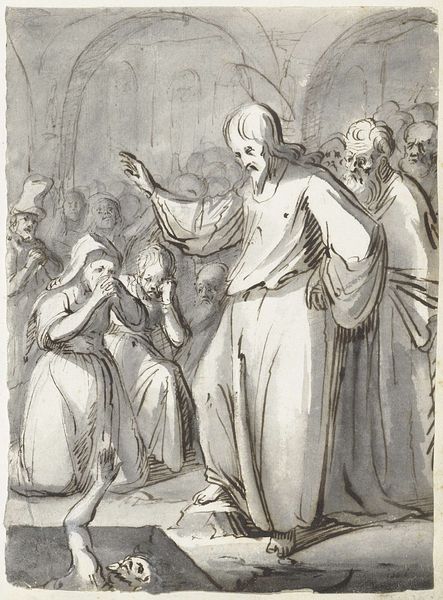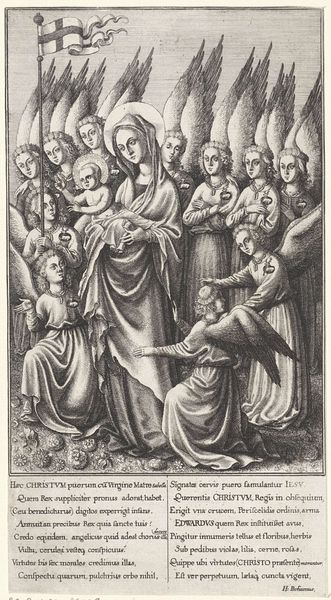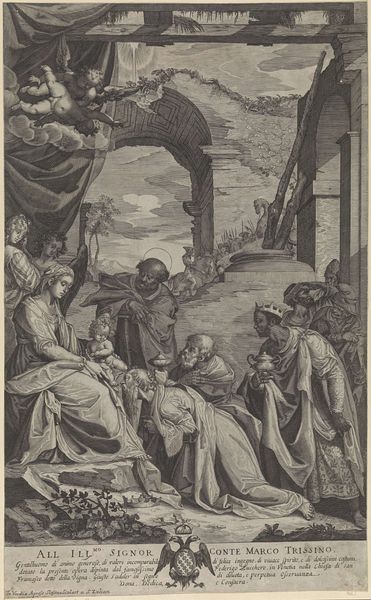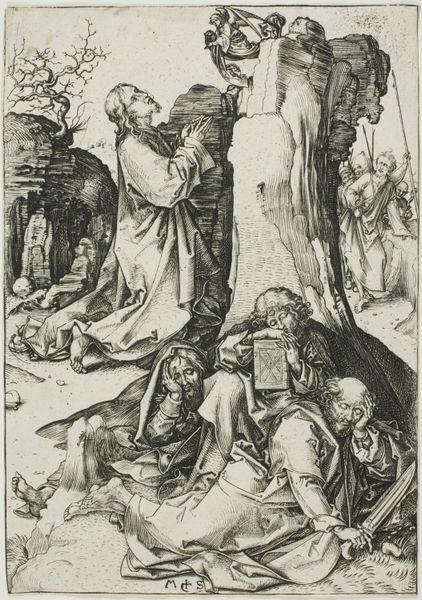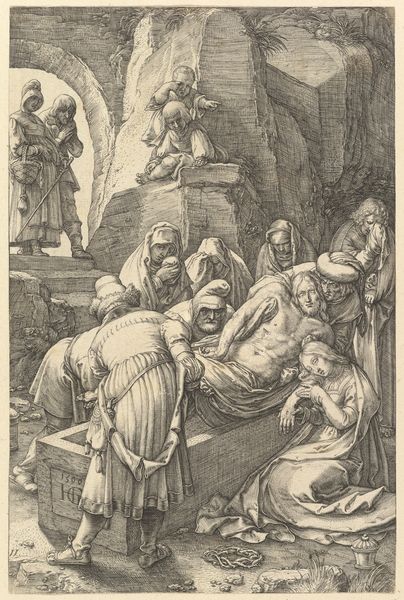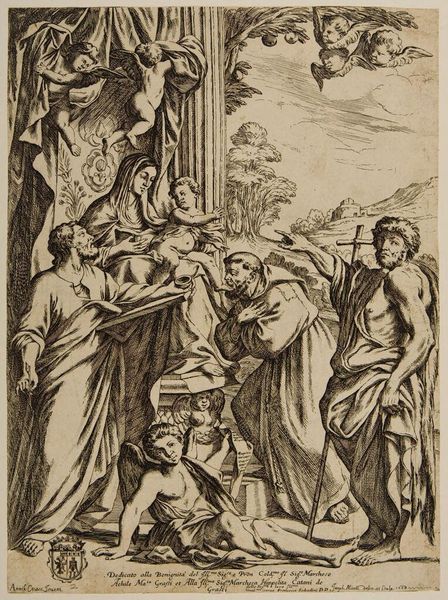
drawing, print, engraving
#
drawing
#
light pencil work
#
quirky sketch
#
narrative-art
#
mechanical pen drawing
# print
#
pen sketch
#
pencil sketch
#
figuration
#
personal sketchbook
#
pen-ink sketch
#
sketchbook drawing
#
pencil work
#
history-painting
#
storyboard and sketchbook work
#
italian-renaissance
#
engraving
Dimensions: height 203 mm, width 158 mm
Copyright: Rijks Museum: Open Domain
Editor: We’re looking at "The Raising of Lazarus," an engraving by Lambertus Suavius from 1544. It has this almost hushed, expectant atmosphere rendered with fine lines. The expressions are incredibly engaging. What do you see in it? Curator: I see a fascinating intersection of religious narrative and the evolving role of printmaking. Think about it – how did access to religious stories shift when imagery became reproducible? What does this availability mean for public understanding of these stories? Editor: So, it's not just a depiction of the miracle, but about access? Curator: Precisely! The story becomes less of a divine secret held by the Church and more of a shared cultural experience. The Italian Renaissance witnessed an explosion of printed images, and the Raising of Lazarus would have been particularly resonant. What does it say about power, resurrection, and faith, when disseminated widely? Editor: Interesting! Now that I consider that, how are these narratives different in print compared to, say, a grand cathedral painting? Curator: Cathedrals are imposing, controlled environments. A print is portable. It’s democratizing. Consider who could own, study, and interpret this work. Its presence reconfigures religious authority by making imagery widely available. Do you notice the individualized faces? Editor: Yes, each person seems to have their own reaction to Lazarus! The printing enables so much detail! Curator: Indeed. Suavius doesn’t present a single, monolithic religious feeling. He offers a spectrum. That is key, given that printed images offered personal devotional aids beyond those sanctioned or controlled by powerful elites. The engraving itself participates in socio-cultural reformation through representation and making narratives accessible. Editor: I never considered how access influences interpretation. Thanks! Curator: A great perspective that's influenced by social forces makes our interpretations richer!
Comments
No comments
Be the first to comment and join the conversation on the ultimate creative platform.
